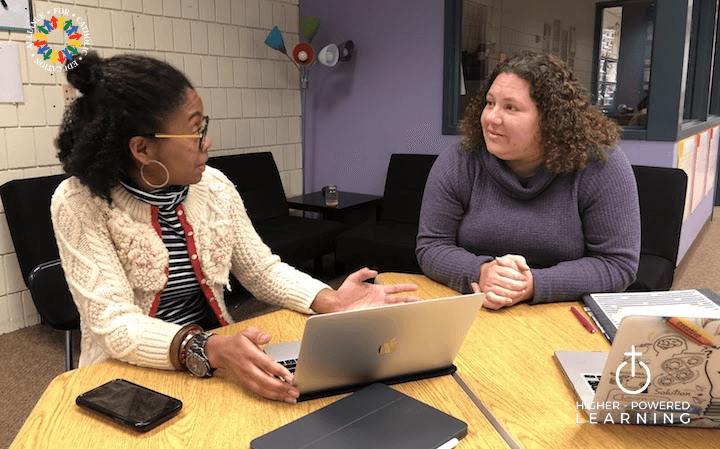The research on professional development (PD) is clear: change is tough! Research funded by the Bill and Melinda Gates Foundation on PD states that "far too many teachers have reported that current professional development offerings are neither relevant nor effective."
Another research point made by CoSN links the hurdle to the sustainability of innovative programs with the lack of agility, strategies, and mindsets necessary to move from a few classrooms to an entire school. In order to overcome these barriers, we grounded our coaching framework in the research and adapted it for our schools' use.
The Beginnings
Our coaching model is based on the works of Elena Aguilar and Jim Knight. We created our rubric (or walkthrough tool as we like to call it), to serve two purposes. First, it grounds our work and ensures all of our schools are focused on the same objective. And second, it clearly lays out what a successful blended-learning classroom looks like.
We spent much of year one modeling classroom walkthroughs and coaching meetings with our BLAST teachers. Year two has been our transition from coaching teachers to "coaching coaches." After completing a year of direct blended-learning coaching with us, our BLAST teachers are now coaching their colleagues.
They conduct intentional classroom walkthroughs approximately two times a month. Upon completion of a walkthrough, our BLAST teachers debrief with their coachee and provide assistance as needed. By creating a support system within each school, as opposed to pulling teachers out for regular professional development, sustainability is happening!
Spreading the Change
Before any transformational project can be successful, people must believe in it! No matter how great the initiative is, if teachers do not see the value in it, they will not enact change. During year one, our BLASTs witnessed the benefits of adding blended learning to their classrooms. They were enthusiastic and eager to share.
We anticipated questions like, "How do I get my colleagues to believe in this, too?" in the development of our program. Many non-blended teachers had the chance to observe our BLAST teachers in action during year one. They were excited to implement our program in their classrooms but still had questions. What exactly would blended learning look like in their classroom? How does blended learning look for kindergartners? Would they have to completely redesign their lessons and classroom layout?"
We introduced our BLAST teachers to the change-management theory as they began the full-school rollout. Change management provided a lens addressing teacher buy-in and sustainability from a rational and emotional perspective. More on this to come!
The Coaching Process
We started by introducing coaching cycles (ranging from two to four weeks) covering similar indicators on our walkthrough tool. Once our teachers were in classrooms conducting regular 10-minute walkthroughs, we focused on the actual coaching.
 Teachers focus on one indicator and take objective notes during their classroom walkthroughs. Once the walkthrough is complete, our BLAST teachers set up a quick meeting (no longer than 15 minutes) with their colleagues to debrief their walkthrough and assist where needed.
Teachers focus on one indicator and take objective notes during their classroom walkthroughs. Once the walkthrough is complete, our BLAST teachers set up a quick meeting (no longer than 15 minutes) with their colleagues to debrief their walkthrough and assist where needed.
Our BLAST teachers are rocking at coaching, and the early results, observations, and feedback have been exciting. All of our schools have implemented blended learning school-wide, and software and MAP data reports are showing promising growth as a result. Our teachers have also expressed their excitement for the program and the growth they have already seen in their students.
Are you participating in any type of coaching in your classroom/building? Stay tuned next post as we unpack "Change Management" and how we used this theory to help our BLAST teachers frame full-school implementation during year two!
 Alliance for Catholic Education
Alliance for Catholic Education
